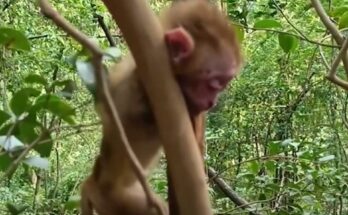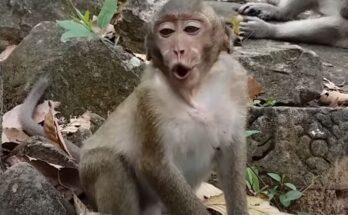The Japanese snow monkeys, also known as Macaca fuscata, are a species of macaque native to Japan. Renowned for their ability to live in the coldest climates of any primate, these monkeys are often seen in the hot springs of Jigokudani, a famous valley in the Nagano Prefecture. Jigokudani, which translates to “Hell Valley,” is not only known for its scenic beauty and hot springs but also for the fascinating behavior of the snow monkeys, especially their social interactions, which can occasionally escalate into intense fighting.
The snow monkeys are highly social animals, living in large groups that can range from 20 to 100 individuals. These groups are organized hierarchically, with a clear structure of dominance that influences much of their behavior, including conflict. Within the groups, there are dominant males, typically the older, larger monkeys, and subordinate members, including both males and females. The social order is important in ensuring stability, but it also leads to competition, especially during mating season or when food resources are limited.
In Jigokudani, the hot springs provide an important resource for the snow monkeys, offering a warm respite during the harsh winter months. This area has become famous for the sight of monkeys bathing in the steaming waters, a behavior that helps them conserve heat and maintain body temperature in the freezing environment. However, the presence of limited space in the hot springs and the monkeys’ social dynamics often leads to tension and conflict. These fights are often brief but intense, as individuals vie for space in the pools, which they consider essential for survival.
The fighting among Japanese snow monkeys can take many forms, from vocalizations and posturing to full-blown physical confrontations. The most common type of conflict occurs between males, especially during the winter months when mating opportunities are at their peak. These battles often revolve around dominance and access to females. The dominant males will assert their position through physical intimidation, such as charging, grappling, or biting, while the lower-ranking males may attempt to challenge them in an effort to rise in the social hierarchy.
Females also participate in these social struggles, although their role is somewhat different. Female monkeys are primarily concerned with protecting their offspring and securing access to resources, such as food and grooming. In some cases, female snow monkeys may engage in conflicts with each other over these resources or over access to males.
In the case of the hot springs, fights often occur when there is a shortage of space in the warm waters. These altercations can be dramatic, with monkeys splashing and pushing one another out of the pools. Though such behavior may seem aggressive, it is often more about establishing or reaffirming social roles than about true hostility. The physical confrontations are usually not deadly; instead, they serve as a way for the monkeys to reassert dominance, reinforce social bonds, or address grievances.
Despite the occasional violence, the social structure of the Japanese snow monkeys is a key part of their survival in the harsh winter environment of Jigokudani. The hot springs, in addition to providing warmth, also serve as a communal space for social interaction, and the fights that occur there are a natural part of the complex web of relationships within the troop. These monkeys, through their interactions, demonstrate both the importance of cooperation and the inevitability of conflict in the animal world. The behavior of the Japanese snow monkeys offers fascinating insight into how animals navigate the challenges of survival while maintaining social order in a sometimes brutal environment.
4o mini


